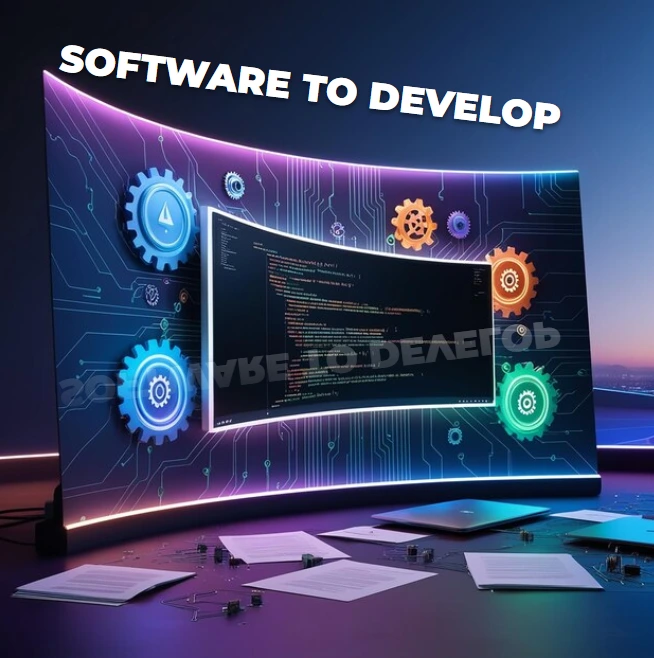Unlock Your Potential: The Best Software to Develop Innovative Applications

The digital age thrives on innovation, and at its heart lies the power of software development. Creating groundbreaking applications isn't just about coding; it's about harnessing the right tools to bring your vision to life. Choosing the best software isn't a one-size-fits-all proposition, but rather a careful consideration of your project's specific needs and your team's expertise. Are you building a complex enterprise-level system requiring robust scalability and security? Or are you crafting a nimble mobile app focused on user experience and rapid iteration? The answer dictates the ideal software development environment.
For large-scale projects demanding intricate databases and complex interactions, established platforms like Java with Spring Boot or .NET with ASP.NET Core offer comprehensive frameworks and mature ecosystems. These provide robust structures for handling vast amounts of data, ensuring reliability and security. Think of building a banking application or a sophisticated e-commerce platform – the stability and performance these frameworks offer are paramount. They allow for meticulous planning and the integration of multiple functionalities, making them perfect for projects requiring long-term maintainability and scalability. However, the learning curve can be steeper, requiring a team with specialized skills and experience.
On the other hand, if speed and agility are your priorities, perhaps Python with frameworks like Django or Flask would be a better fit. Python's elegant syntax and extensive libraries make it a popular choice for rapid prototyping and development. This is particularly beneficial for startups or projects where iterative development and quick feedback loops are critical. The vast community support and readily available resources further contribute to Python's appeal, making it easier to find solutions and expertise. Think of developing a web application with dynamic features, a data analysis tool, or even a machine learning model – Python offers a powerful and versatile solution.
For mobile application development, the choice narrows down to native development (Swift/Kotlin) or cross-platform frameworks like React Native or Flutter. Native development provides the best performance and access to device-specific features, but requires maintaining separate codebases for iOS and Android. Cross-platform frameworks, conversely, allow developers to write code once and deploy it on multiple platforms, significantly reducing development time and cost. However, this might come at a slight performance trade-off in certain scenarios. The decision hinges on your budget, timeline, and the complexity of the app's functionalities.
Beyond the core programming languages and frameworks, consider the importance of integrated development environments (IDEs). IDEs like IntelliJ, Visual Studio, or VS Code offer powerful features like code completion, debugging tools, and version control integration, dramatically boosting developer productivity. They provide a structured environment that simplifies the development process and fosters collaboration. Choosing the right IDE complements your chosen software stack, further enhancing your team's efficiency and output.
Ultimately, the "best" software for developing innovative applications depends on a nuanced understanding of your project’s goals, constraints, and your team's skillset. Careful planning and research are crucial to selecting the optimal tools that will empower your team to unlock its full potential and bring your innovative ideas to fruition. Don't hesitate to experiment and evaluate different options to find the perfect match for your unique needs.
Igniting Your Creativity: Choosing the Right Development Tools for Your Vision
Developing innovative applications isn't just about coding; it's about harnessing the power of the right tools to bring your ideas to life. The software you choose will directly impact your productivity, the quality of your application, and ultimately, its success. This isn't a one-size-fits-all scenario. The ideal software depends heavily on factors like the type of application you're building (web app, mobile app, desktop app, game), your budget, your team's expertise, and your desired level of control over the development process. Consider your needs carefully before making a decision – the wrong choice can lead to significant time and resource losses.
Web Application Development: Building for the Browser
For web applications, the landscape is vast. Popular choices include JavaScript frameworks like React, Angular, and Vue.js, each boasting its strengths and weaknesses. React, known for its component-based architecture and virtual DOM, excels in building dynamic and complex user interfaces. Angular, a comprehensive framework from Google, provides a structured approach with built-in features for data binding and routing. Vue.js, a more lightweight and flexible option, offers a gentle learning curve while still delivering powerful functionality. Back-end technologies such as Node.js (JavaScript), Python (with frameworks like Django or Flask), Ruby on Rails, and PHP offer robust solutions for server-side logic and database management. Your choice will depend on factors like team familiarity, project scale, and performance requirements.
Mobile Application Development: Reaching a Global Audience
Creating mobile applications presents its own set of challenges and opportunities. Native development (using Swift/Objective-C for iOS and Java/Kotlin for Android) offers optimal performance and access to device features but requires separate codebases for each platform. Cross-platform frameworks like React Native, Flutter, and Xamarin provide a compromise, allowing you to write code once and deploy to both iOS and Android. While they might slightly compromise performance compared to native apps, they significantly reduce development time and cost. The best choice depends on your priorities – native for ultimate performance, cross-platform for speed and efficiency.